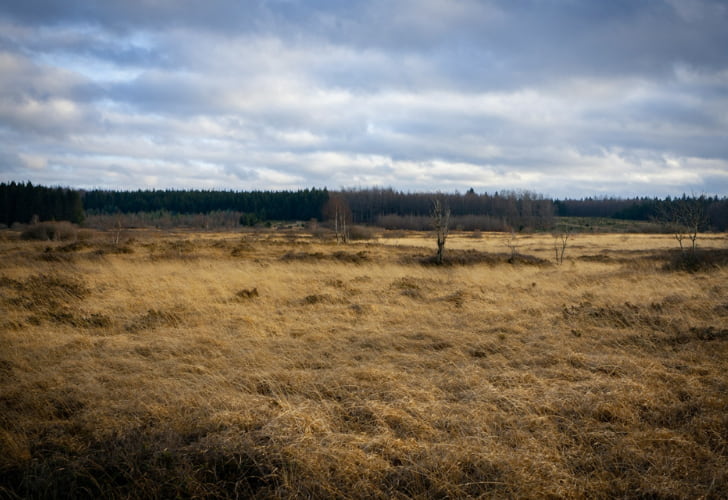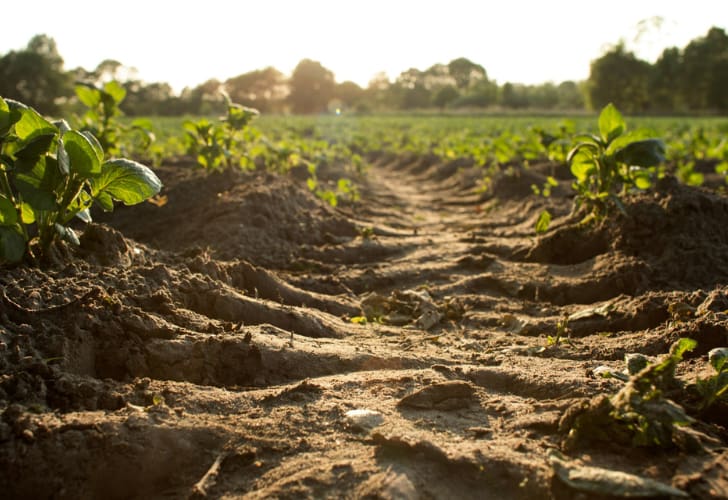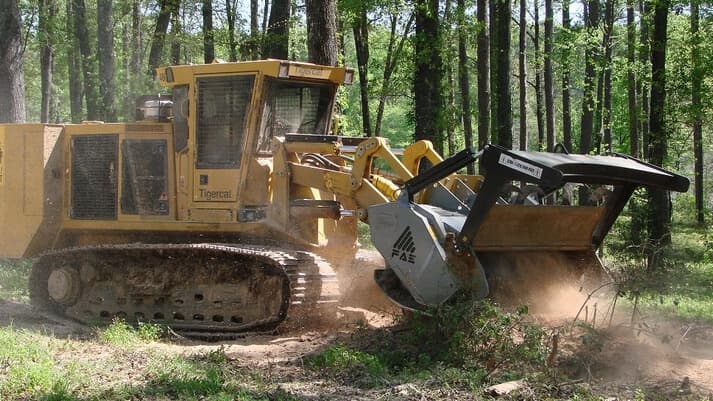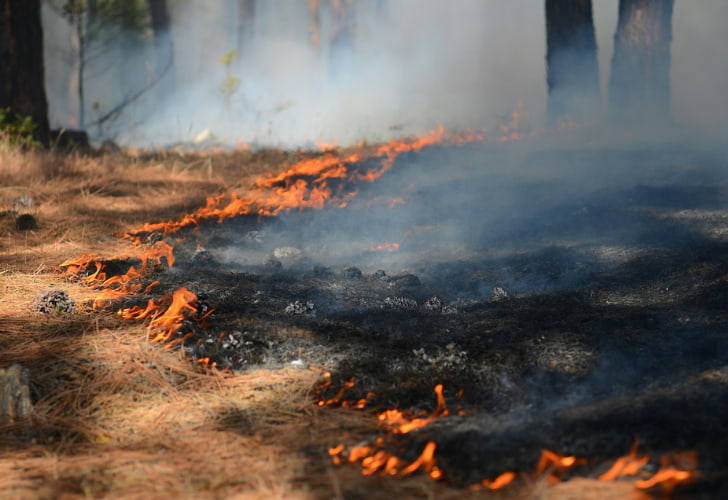When planning a new building, driveway, or even a small farm, the first step is often land clearing. This involves removing trees, brush, stumps, and rocks to prepare the ground for safe and practical use. Professional land clearing services employ various methods and specialized equipment to handle different terrains and project needs. Whether for building developments, road construction, or preparing farmland, understanding land clearing methods and the equipment involved is crucial to ensuring efficiency, safety, and long-term land use. This article will walk you through the essentials of land clearing, from its definition to techniques, tools, and best practices.

(Image Source: Photo by Pascal Salewski on Unsplash.com)
What is land clearing?
Land clearing is the planned removal of vegetation, such as trees, shrubs, stumps, roots, brush, rocks, and other surface obstructions, to prepare land for a new use. It is a permanent, project-driven activity (not routine yard maintenance) that relies on modern, heavy equipment to shape the site. Common goals include building foundations, roads or railways, creating pasture or arable land, and other forms of land development. The work often involves handling topsoil, grading for drainage and access, and managing large volumes of vegetative debris in accordance with local regulations. Because soils and terrains differ, professional teams choose methods and machinery that match site conditions and regulatory, environmental, and reuse requirements.
What is the Purpose of Land Clearing?
Land clearing serves as the foundation for most large-scale projects. In construction, it removes trees, brush, rocks, and other barriers that prevent safe grading and the placement of stable foundations. Without this step, it would be difficult to design roads, buildings, or infrastructure that align with site conditions and long-term plans.
In agriculture, land clearing prepares soil for planting and grazing. By eliminating unwanted vegetation that competes for nutrients, the process improves soil productivity and helps new crops or pastures grow more effectively. Farmers may also clear land to control invasive species or restore land health.

(Image Source: Photo by Dylan de Jonge on Unsplash.com)
Beyond construction and farming, land clearing can improve safety by removing hazards such as dead trees, dense undergrowth, or debris that harbor pests. However, the practice must be carried out responsibly. Poorly managed clearing can lead to erosion, nutrient loss, and ecological damage. When done with care and proper planning, land clearing creates usable space while balancing environmental sustainability.
How Does Land Clearing Work?
In most projects, land clearing typically follows several key steps to ensure the land is stable, safe, and ready for development.
- Planning
Before any machinery is brought in, professionals assess the site and determine the project scope. This includes recording landscaping, existing buildings, utility lines, and potential obstacles. Soil tests may also be conducted to see if stabilization is needed. Proper planning ensures the right land clearing methods are chosen and necessary permits are obtained.
- Preparation
After planning, the work area is prepared by creating access roads and staging areas for heavy equipment. Trees or structures that need to be preserved are marked, protecting valuable assets during the clearing process.
- Demolition
If existing structures are on the site, they must be safely removed. Depending on the situation, demolition methods can involve dismantling, mechanical demolition, or, in rare cases, explosives.
- Vegetation Removal
Trees, shrubs, and brush are then cleared using techniques (we’ll explain them in detail later) like cut and grind, bulldozing, hand clearing, controlled burning, or chemical herbicides. Each method balances efficiency with soil preservation, as removing roots completely prevents regrowth and protects topsoil.
- Grubbing
Grubbing removes remaining roots and stumps to prevent vegetation from regrowing. Equipment such as excavators, bulldozers, or mulchers is often used to process debris efficiently.
Land Clearing Methods
Different projects and site conditions require different land clearing techniques. Choosing the right method depends on factors such as vegetation type, land size, intended use, and environmental considerations. Here are the most common methods:
- Grubbing and Dozing
Grubbing and dozing is a heavy machinery method that clears both surface vegetation and underground roots. A bulldozer removes trees, shrubs, and brush, while a grubbing attachment digs out stumps and roots, leaving the land fully cleared and ready for construction or farming.
This approach works best for large or heavily forested areas where complete removal is necessary. It is efficient and faster than manual clearing, but it can disturb the soil and increase erosion if not handled carefully. Professional guidance is recommended to ensure the land is cleared effectively while protecting the site.
- Cut and Grind
Cut and grind is suited for areas with lighter vegetation or fewer trees. In this method, small trees, bushes, and underbrush are first cut down and then ground into mulch using machines like mulchers , brush mowers, or forestry mowers. The mulch is left on the ground to decompose naturally, adding nutrients back into the soil.

(Image Source: pinterest.com)
This approach is particularly useful for pastures, forest trails, firebreaks, or overgrown fields where soil preservation and minimal disturbance are important. While it works efficiently for small vegetation and regular land maintenance, it is less effective for removing large trees or deeply rooted stumps and is not suitable for large-scale construction projects that require complete clearing.
- Hand Clearing
Hand clearing relies on manual labor to remove vegetation, using tools such as axes, machetes, saws, or chainsaws. This method is often applied in small areas or sites where heavy machinery cannot be used. It allows for the precise removal of trees and brush with minimal disturbance to the soil, making it suitable for areas where preserving the land’s natural structure is important.
While hand clearing is relatively inexpensive, it requires too much labor, so it is not ideal for large-scale projects or dense forests. Despite these limitations, hand clearing remains an effective option for small lots, garden spaces, or targeted vegetation removal where careful management is needed.
- Controlled burning
Controlled burning is one of the oldest methods of land clearing, traditionally used by farmers and forest managers. This technique involves intentionally setting fire to accumulated vegetation in a carefully managed manner to remove trees, shrubs, and underbrush. When executed properly, it can clear large areas quickly and cost-effectively, leaving the land ready for agriculture or other uses.

(Image Source: Photo by Emma Renly on Unsplash.com)
Despite its efficiency, controlled burning carries significant risks. Fires can easily get out of control, causing property damage, harming nearby ecosystems, or producing hazardous smoke that affects air quality and human health. Because of these dangers, controlled burning requires careful planning, strict supervision, and adherence to safety regulations. While it remains useful in certain large, open areas, such as grasslands or forests needing regeneration, it is generally not recommended for smaller plots or areas near structures.
- Chemical Herbicides
Using chemical herbicides is another approach to land clearing, particularly when dealing with dense vegetation or invasive plant species. Chemicals are applied directly to the land to kill trees, shrubs, and other plants. This method is relatively inexpensive and can cover large areas more quickly than manual or mechanical techniques.
However, chemical herbicides come with notable environmental risks. They can harm soil health, reduce biodiversity, and contaminate nearby water sources. Non-target plants and wildlife may also be affected, and certain types of vegetation, such as deep-rooted trees, may not respond effectively to herbicide treatment.
Land Clearing Tools and Equipment
Land clearing uses various tools and machinery, from bulldozers and excavators to mulchers and chainsaws, depending on the terrain and vegetation. For a closer look at the equipment involved, you can refer to our previous article here .
Do You Need a Clearance for Land Clearing?
It depends. Before starting any land clearing project, it’s important to check whether you need a permit or clearance. Requirements vary by location and the type of vegetation involved, as clearing can impact soil, wildlife, and the environment. For larger projects, local authorities may require detailed plans showing the area to be cleared, the vegetation removed, and how the land will be used afterward. Always confirm with your local government or land management agency to ensure your project complies with regulations and avoids potential fines.
Final Thoughts
Land clearing is an essential step in any development project, from parks to shopping centers, but it involves much more than simply removing trees and brush. Factors such as drainage, soil type, and community needs must be carefully considered. Responsible companies emphasize conservation, recycling, and sustainability. They preserve valuable topsoil, protect mature trees when possible, and repurpose vegetative debris into mulch, compost, or biofuel instead of burying or burning it. Not all land clearing companies follow these practices, so it is important to ask where debris will go. Ultimately, conscientious land clearing supports both environmental health and community well-being by reducing waste, conserving green spaces, and providing safe, functional sites for new projects.
*All of the above images are not intended for commercial use.
